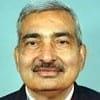Explore all the information on
Feed formulation
Welcome to the page about Feed formulation of Engormix; a source of knowledge on Feed formulation.
Introduction In order to lower feed costs, crystalline AA are used routinely in swine diets to replace a portion of the soybean meal. The AA that are currently available to add to swine diets include lysine, threonine, methionine, tryptophan, and valine. The increased availability of crystalline AA sources has created the opportunity to formulate grain-based diets to the fifth or sixth limiting AA. If this can be accomplished without negatively affecting pig growth performance,...
Comments : 0
Recommendations: 0
Hi,
I formulated a broiler feed and there is 20.78% protein content in it.
The ingredients are as follows;
Corn 11.5%
Millet 5%
Wheat 8.25%
Flaxseed Cake 7.5%
Canola Cake 10%
Sesame Cake 7.5%
Calcium Carbonate 0.125%
DCP 0.125%
Amino Acids 50 grams per 100 kg (Choline Chloride, DL-Mehtionine, L-Lysine)
The Analysis report is as follows;
Moisture 9.05%
Crude Protein 20.78%
Ether extract 6.91%
Crude Fiber 4.24%
Crude Ash 6.62%
The bird is not putting up weight. Please guide...
Comments : 0
Recommendations: 0
.jpg&w=3840&q=75)

From waste to resources: A successful model of biocircular economy
Suggested link
Introduction India has a very large population of livestock both of productive and unproductive animals. Ruminants are mostly fed on low-quality roughages, which are poor in protein, energy, minerals, and vitamin contents. Addition of cereal and leguminous fodder in ruminant diets can improve the utilization of low-quality roughages mainly through the supply of N to rumen microbes. The ruminants can make efficient use of mill by-products, crop residues, and other...
Comments : 0
Recommendations: 1
Background After pigs are weaned from their dams, morphological and functional changes occur in their small intestine. Pluske et al. [1] reported decreased villi height and increased crypt dept. Because newly-weaned pigs are transitioned from milk to dry feed, the pig’s intestinal tract is unable to fully digest and absorb the more complex plant-based macronutrients in the feed. Various researchers [2,3] have reported that this accumulation of undigested and unabsorbed...
Comments : 0
Recommendations: 0
.jpg&w=3840&q=75)

Comprehensive solution in the aninal nutrition industry: Midland ADN Group
Suggested link
FEFANA invites members and visitors to explore its new website. The new website, which has been completely revamped to improve experience and navigation, hosts two up-dated classification tools available to guide feed business operators and authorities. The new FEFANA website has been re-designed to be more user-friendly allowing visitors to browse easily for information they are looking for. It highlights the main topics of the Specialty Feed Ingredients Industry represented by...
Comments : 0
Recommendations: 1
Introduction. The substitution of corn to sorghum, in addition to a lower price, has greater resistance to drought, which favors its cultivation in various regions with low rainfall (Fialho; Barbosa, 1997). Although rustic, sorghum loses to be less productive and the carotenoid deficiency in maize, an effect that may be corrected by inclusion of pigments in the diets of poultry (Oliveira et al., 2008). The aim of this study was to evaluate the...
Comments : 1
Recommendations: 0
.jpg&w=3840&q=75)

From waste to resources: A successful model of biocircular economy
Suggested link
Dr. Manoosak Wongphatcharachai (CP Group) talks about changes made in research approach and application of biotechnology to improve animal performance, feed efficiency and animal health, during the 5th IHSIG Symposium on Poultry Intestinal Health in Bangkok, Thailand....
Comments : 0
Recommendations: 6
Dr. Rommel Sulabo (University of the Philippines Los Baños) speaks on the benefits of different feed ingredients, such as cereal grains, co-products, and proteins of plant or animal origin, during the 5th IHSIG Symposium on Poultry Intestinal Health in Bangkok, Thailand....
Comments : 0
Recommendations: 5
.jpg&w=3840&q=75)

Comprehensive solution in the aninal nutrition industry: Midland ADN Group
Suggested link
Good day. Sticking exclusively to the processing/treatment, I would like to specify some aspects to improve the use of fiber in pigs: - It is important to quantify the particle size of the most relevant grains, such as grasses: maize, sorghum and legumes: Soy, for example. The studies conclude that particles of maize grain and GF sorghum with respect to grains> 1,000 μm. In the case of Soy, it has been shown that between 600 and 700 μm is the recommended range in most diets for...
Comments : 1
Recommendations: 0
Introduction Feed pelleting can be defined as conversion of finely ground mash feed into dense, free flowing pellets or capsules, in a process involves steam injection (moisture & heat) and mechanical pressure. There are several advantages for feeding broilers on pelleted rather than mash feed. The main advantage is the improved bird performance (improved feed intake, weight gain and...
Comments : 28
Recommendations: 7
.jpg&w=3840&q=75)

From waste to resources: A successful model of biocircular economy
Suggested link
A new study about the nutritive characteristics of canola meal from Canadian processing facilities has been published recently in the Animal Feed Science and Technology magazine (Adewole et al, 2016). The authors evaluated samples of canola meal collected from eleven canola processing facilities in Canada over 4 successive years (2011–2014). Overall, the contents of various components of canola meal in percentage of dry matter (DM) basis were:
crude protein: 41.7% DM...
Comments : 4
Recommendations: 0
In this industry, we talk about protein a lot. This is because it helps evaluate the value of an ingredient or diet. The type of protein we are talking about though is “crude protein”, which is a routine chemical measure that’s been around since the 1800’s. ...
Comments : 3
Recommendations: 5
.jpg&w=3840&q=75)

Comprehensive solution in the aninal nutrition industry: Midland ADN Group
Suggested link
INTRODUCTION Acidulated soapstock is a fat source produced by the acidification of residues produced during the refining of vegetal oil for human consumption. Several types of soapstock have been used in broiler feeding, and are composed either of a unique source or blends of different fats. Soapstocks have high free fatty acid content. Acidulated Soybean Soapstock (ASS), for example, is composed by around 70% free fatty acids compared to less than 1% in soybean oil (Lipstein...
Comments : 0
Recommendations: 2
Dr. David Akinde will be one of the speakers at the FIAAP Animal Nutrition Conference 2017 that will take place in Cologne, Germany, on June 14th.
Akinde is a feed nutrition service...
Comments : 0
Recommendations: 0
.jpg&w=3840&q=75)

From waste to resources: A successful model of biocircular economy
Suggested link
Feed Phytogenics Market size is forecast to exceed 145 kilotons from 2015 to 2022, with growth projected at over 2.5%. Global Market Insights has announced the addition of their detailed report on these plants derivate products market. The report discusses in depth analysis of market trends, drivers, restraints, challenges, opportunities as well as the competitive landscape of the market. The report estimates the global market size of these natural growth...
Comments : 2
Recommendations: 2
The nutritional quality of soybean meal is determined by several factors, one of these thermal treatments are performed during processing and producing the inactivation of toxic and / or soy antinutrients. There are several anti-nutritional factors that limit absorption a number of nutrients, reducing by more than 50% its nutritional value and carry negative digestive effects. Some of these factors are trypsin inhibitors, hemagglutinins, goitrogenic factors,...
Comments : 0
Recommendations: 0
.jpg&w=3840&q=75)

Comprehensive solution in the aninal nutrition industry: Midland ADN Group
Suggested link
The Recent Advances in Animal Nutrition – Australia conference ( 25-27 October) is an event at which experts from the scientific community and leaders in industry have gathered for the past 40 years to discuss issues of importance to animal nutrition.
The call for abstracts is now open and we welcome you to submit an abstract for consideration by our...
Comments : 0
Recommendations: 0
Introduction
A three-phase growout process is commonly used in the commercial production of hybrid striped bass in earthen ponds. Phase I fingerlings, 2.2 to 3.3 lb/1000, are stocked into phase II ponds at a density of approximately 12,000/acre. Harvest of fish (2.2 to 4.5/lb) from phase II ponds is followed by size grading that precedes stocking into ponds (3,500/acre) for the final growout phase. Size...
Comments : 0
Recommendations: 0
.jpg&w=3840&q=75)

From waste to resources: A successful model of biocircular economy
Suggested link
In modern poultry nutrition, traditional fibre sources are associated with some negative attributes such as energy dilution of the diet and mycotoxin contamination and are usually not included during linear formulation. However, fibre is also suggested to have a positive effect on the intestinal microflora and the intestinal health including for poultry. While some nutritionists believe that crude fibre is an integral part of the poultry diet, others argue that...
Comments : 18
Recommendations: 0
Bühler and Protix have founded the joint venture Bühler Insect Technology Solutions. This joint venture will develop scalable, industrial solutions for the rearing, and processing of insects to provide protein primarily for animal feed and food.
China
Bühler Insect Technology Solutions is located in China and has already begun operations. “By combining the knowledge and experience of our two companies, we can provide industrial insect processing...
Comments : 0
Recommendations: 0





















